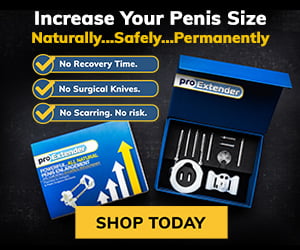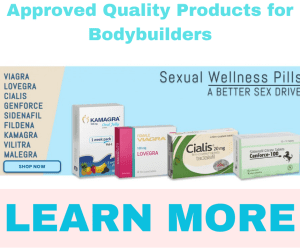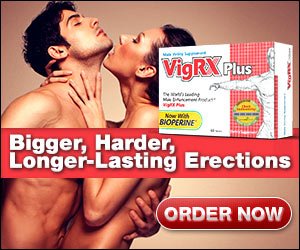Recovery
Getting Back on Track After Contracting Covid-19 (A Bodybuilder’s Guide)

The Coronavirus Disease of 2019 (COVID-19) is considered one of the most dangerous viral infections affecting mankind. The disease has left an ugly scar in sports that may take decades to erase. Towards the end of 2020, the virus brought the world to a standstill. Every sport was curtailed, and participants and respective management were confined to their homes in worldwide lockdowns of biblical proportions. The level of inconvenience was unprecedented in recent history, and Covid-19 seems to have changed our world forever. Whether you’ve been infected or not, everyone has been affected somehow back on Track After Covid-19 is not very difficult.
Related Article:: Covid-19: Advices to Steroid Users
Sportsmen and women, bodybuilders, had careers hanging in the balance, especially those who contracted Covid. Consequently, all were asked or forced to train from home. Everyone had to improvise to keep their form; trust me, it came with many sacrifices. Fast-forward to the beginning of 2021, reality started hitting hard, and we decided the virus wouldn’t continue holding us at 00000ransom. Normalcy started returning, albeit with difficulty. Restrictions were relaxed gradually, and we’re now halfway toward complete normalcy. However, just like how people struggled to adapt to the new normal, we’re having a rough time getting back on track. Humans are incredible creatures; we can continually adapt to any change as long as the conditions endure.
Here is how bodybuilders who have contracted Covid-19 can get up on their feet again and resume their careers. Strong!
Get Medical Clearance
Ensuring you're free from the virus is the first step towards resuming your career as a bodybuilder. However, some scary discoveries continue to be made about this virus. Several recovered patients have continued to experience certain complications even after testing negative for Covid-19. These include the lungs and other organs that don't work in their regular capacity. As a bodybuilder wanting a successful career, this discovery could be devastating. Furthermore, some people report having died suddenly death days or weeks after making a full recovery. For this reason, you must get medical clearance from the doctor before resuming any bodybuilding activity. You should first undergo these tests to determine whether you can resume training after recovering from COVID-19.
Cardiovascular Evaluation
Covid-related sudden deaths have been reported among athletes since the pandemic began. Sudden death is caused by a condition known as myocarditis. Recovered patients may have had an injury in their cardiovascular system, which may eventually cause death. A cardiovascular evaluation by a professional medical practitioner will reveal whether the person can resume training and the exercises they should perform. Tests to determine cardiovascular fitness include heart sounds, chamber dilations, pressure at lower extremities, and more. If any of these cardiovascular activities are found to be below or above average, then it means the athlete is not fit enough to resume full training.
Related Article:: What Impact Have Anabolic Steroids Taken On Your Heart and Blood Cells?
Additionally, the doctor will prescribe appropriate medication and suggest other ways to help you fully recover. It is also important to note that Covid-19 affects people differently. People with severe cases of the disease are more likely to experience complications after negative testing. Mild cases, on the other hand, don’t come with any additional complications post-recovery.
Hypertensive Evaluation and Medication
If a medical doctor determines you’re susceptible to hypertension post-Covid, you must take antihypertensive drugs. These drugs are helpful because they help stabilize blood sugar levels among recovering patients. However, medication such as renin-angiotensin-aldosterone inhibitors may cause adverse side effects. In such a case, you should discontinue the medication and concentrate on other non-medical recovery methods only if the effects are severe.
Pulmonary Evaluation
Coronavirus affects the lungs more than any other organ in the human body. That means the lungs take longer to recover, and some people report having permanent lung damage. Therefore, a pulmonary evaluation is essential to determine the extent of lung damage, if any. Acute respiratory syndrome, a condition seen in recovered Covid patients, may negatively impact a bodybuilder’s career if not detected. A lung examination by a qualified physician should indicate if your lungs are still in distress. The following findings should prompt additional examination of your respiratory system:
- Crackles
- Dullness to percussion
- Egophony
- Dyspnea
- Any other signs of respiratory failure
Not that the lungs play a crucial role in bodybuilding training, and any complication may end your career.
Return to Training Progression
Once the various organs and systems are evaluated, it is time to resume training. You should know that training will be progressive; you won’t start from where you left off. Being a new disease, clinicians and sports managers have not come up with clear guidelines on how to resume training after infection. However, we know that the body may not work at total capacity, hence the need to start with light exercises.
Must Read:: Running and Bodybuilding: Is it a Good Idea to Mix Them?
Stage 1: Low-Intensity Exercises
A body that has been battling COVID-19 needs time to make a full, natural recovery. Light exercises are part of that recovery but will only work under one condition – it must be slow. In the first week of training, after testing negative, ensure to do the following only:
- Walking
- Jogging
- Simple stretches
Do this for 10-15 minutes every day. It should be enough to prepare your body for what is coming in the second week.
In the second week of training, increase the pace of walking and jogging. Also, double the time, so you exercise 20-30 minutes daily. If you feel strong enough to do more stretches, go ahead. Most importantly, monitor how your body responds to the exercises and make necessary adjustments. Please note that the recovery rate differs in people, so you should do everything at your own pace. Keep exercising for as long as you feel comfortable, and don’t rush to perform strenuous workouts.
Stage 2: Moderate Activity
This is the stage where you start toying around with your training equipment. Technically, no severe training is taking place, just you checking out your stuff. Pick that barbell and feel the weight. How does using the treadmill feel now compared to the pre-COVID period?? Grab that rope, do a couple of skips, and then toss it over.
Stage 2 is when to maximize the low-intensity exercises you did in the first week of training. Perform more stretches and cover a more considerable distance in running or jogging. By now, you should be doing up to two hours of training every day of the week. It will prepare you adequately for what is coming in stage 3.
Stage 3: High-Intensity Exercises
Once you have bonded with the equipment, it is time to do some serious training. At this point, you've recovered entirely and are hungry for it. However, you must be sure that your body can endure intense training before hitting the gym. Exercises in this stage should involve every gym equipment and workout you’re used to. These include bench presses, treadmills, barbells, and push-ups. High-intensity exercises are necessary to compensate for muscle mass and general form losses. You may not be able to resume normal training if the body is not returned to its normal state before the pandemic strikes.
Stage 4: Resumption of Normal Training
The body is now ready to resume normal training after successfully going through stages 1, 2, and 3. Stage 4 is where you return and pick up where you left off. This stage should begin in the second month of training and involve full play. Depending on the kind of exercise, you can always increase the pace and do longer to compensate for lost time.
The table below summarizes various types of activities and planning at every stage.
| Stage | Activity Level | Objective | Duration | Exercises Involved |
| Stage 1 | Rest & Low Intensity | · Facilitate full recovery
· Introduce the body to training |
10-15 minutes | Jogging
Walking Simple stretches |
| Stage 2 | Moderate Training | Prepare the body for high-intensity workouts | 20-30 minutes | 2-3 km run or jog
Stationary bicycle ride Less than 50% weight training Light resistance training
|
| Stage 3 | High-Intensity Training | Restore and develop endurance for full-play training | 2-3 hours | Intense aerobic workouts
At least 4 km run/jog Stationary bicycle at up to 140 watts Full bodyweight training Advanced resistance exercises |
| Stage 4 | Normal training | Standard fitness and return to regular training | As determined by yourself or your trainer | Pre-Covid (normal) training |
Conclusion
Training and bodybuilding in general after contracting COVID-19 may not be a walk in the park. One must prepare psychologically, mentally, and physically before hitting the gym. The power of a positive mind is your greatest weapon against this virus. Waking up every day and deciding that it won't change your life for the worse is the first step toward a comeback. But even as you resume training, be careful not to strain the already-compromised body. Most importantly, ensuring a well-balanced diet is appropriate because it goes a long way in ensuring you resume training fast. Good luck!
Bodybuilding
How Effective is Bone Broth for Recovery?
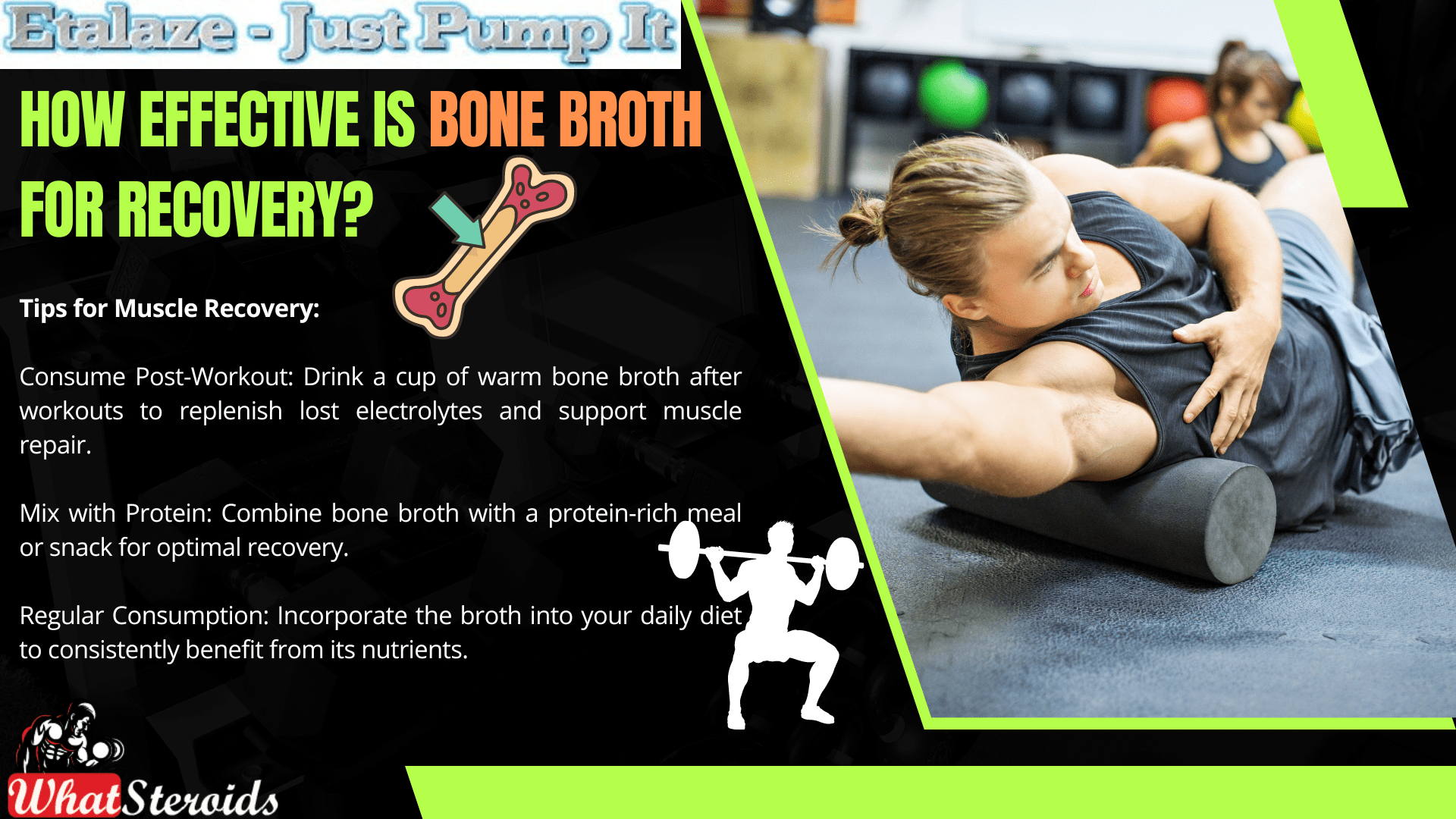
Bone broth has gained popularity in the fitness community, including among bodybuilders, due to its potential benefits for recovery. It is a nutrient-dense liquid made by simmering animal bones and connective tissues for an extended period. This process extracts a variety of beneficial compounds and nutrients. Here's how it is effective for post-workout recovery:
1. Bone Broth is Rich in Collagen and Gelatin:
Bone broth is high in collagen, a protein that supports joint, tendon, and ligament health. Gelatin, derived from collagen, may help reduce joint pain and inflammation, which is beneficial after intense workouts.
2. Amino Acid Profile:
Bone broth contains important amino acids like glycine, proline, and glutamine. These amino acids support muscle repair and growth, immune function, and gut health—all crucial for recovery.
3. Electrolytes and Hydration:
It provides electrolytes like potassium, magnesium, and calcium, which help with hydration and muscle function. Proper hydration is key to recovery and preventing cramps or muscle fatigue.
4. Mineral Content:
Bone broth is rich in essential minerals like calcium, phosphorus, and magnesium. These minerals contribute to bone health and muscle contraction, supporting recovery.
5. Anti-Inflammatory Properties:
The nutrients in the broth may help reduce inflammation, speeding up recovery and reducing soreness after workouts.
6. Supports Gut Health:
Bone broth can help heal and maintain the gut lining, which is important for nutrient absorption and overall recovery.
Must Read: Best supplements for College students
How to Prepare Bone Broth at Home
Preparing bone broth at home is straightforward and can be customized to fit your dietary needs for muscle recovery. Here’s a step-by-step guide:
Ingredients:
- Bones: Use a mix of beef, chicken, pork, or fish bones. Marrow bones, knuckles, and joints are especially rich in collagen.
- Vegetables (optional): Carrots, celery, onions, and garlic add flavor and nutrients.
- Vinegar: 1-2 tablespoons of apple cider vinegar help draw out minerals from the bones.
- Herbs and Spices (optional): Bay leaves, thyme, rosemary, and peppercorns for added flavor.
- Water: Enough to cover the bones and vegetables.
Instructions to Prepare Bone Broth
- Prepare the Bones:
- Roasting (optional but recommended): Roast the bones in the oven at 400°F (200°C) for 30-40 minutes. This enhances the flavor of the broth.
- Place Bones in a Pot:
- Transfer the bones to a large stockpot, slow cooker, or pressure cooker.
- Add Vegetables and Vinegar:
- Add your chosen vegetables and the apple cider vinegar to the pot. Vinegar is crucial as it helps extract the minerals from the bones.
- Cover with Water:
- Add enough water to cover the bones by about 2 inches. Avoid adding too much water, as it can dilute the broth.
- Cooking Time:
- Stovetop: Bring the water to a boil, then reduce the heat to a simmer. Cook for 12-24 hours. The longer you simmer, the more nutrients you extract.
- Slow Cooker: Set on low and cook for 12-24 hours.
- Pressure Cooker: Cook on high pressure for 3-4 hours.
- Skim the Foam:
- During the first hour of cooking, you might notice some foam rising to the top. Skim it off with a spoon to keep the broth clear.
- Add Herbs and Spices (optional):
- In the last hour of cooking, add any herbs or spices for flavor.
- Strain the Broth:
- Once the broth is done, strain it through a fine-mesh sieve or cheesecloth into another pot or large container to remove the bones and vegetables.
- Cool and Store:
- Let the broth cool. You can refrigerate it for up to 5 days or freeze it in portions for longer storage.
- Use the Broth:
- You can drink the broth as-is, use it as a base for soups or stews, or incorporate it into your post-workout meals.
Tips for Muscle Recovery:
Consume Post-Workout: Drink a cup of warm bone broth after workouts to replenish lost electrolytes and support muscle repair.
Mix with Protein: Combine bone broth with a protein-rich meal or snack for optimal recovery.
Regular Consumption: Incorporate the broth into your daily diet to consistently benefit from its nutrients.
Making the broth at home allows you to control the ingredients and flavor, ensuring a nutrient-rich recovery drink tailored to your needs.
Don't Miss: Chia Seeds in A Bodybuilder’s Diet: An Expert’s Advice
Incorporating Bone Broth In Your Diet
Incorporating bone broth into your bodybuilding diet can be both delicious and beneficial. Here are some creative ways to include it:
- Post-Workout Drink: Simply heat up a cup of bone broth and drink it after your workout. It’s a great way to replenish electrolytes and protein.
- Smoothies: Add a scoop of bone broth protein powder to your post-workout smoothie. It blends well with fruits and other ingredients.
- Soups and Stews: Use bone broth as a base for soups and stews. It’s an excellent way to add flavor and nutrients to your meals.
- Cooking Grains: Cook your rice, quinoa, or other grains in the broth instead of water. This enhances the flavor and nutritional content.
- Sauces and Gravies: Incorporate bone broth into sauces and gravies for added depth of flavor and health benefits.
- Marinades: Use bone broth as a base for marinades for meats and vegetables. It adds a rich flavor and helps tenderize the meat.
- Bone Broth Ice Cubes: Freeze bone broth in ice cube trays and add the cubes to your dishes as needed. This is a convenient way to add a nutritional boost to any meal.
- Bone Broth Tea: Mix bone broth with herbs and spices to create a savory tea. This can be a soothing and nutritious drink.
These methods can help you enjoy the benefits of bone broth while keeping your diet varied and interesting. Have you tried any of these methods before?
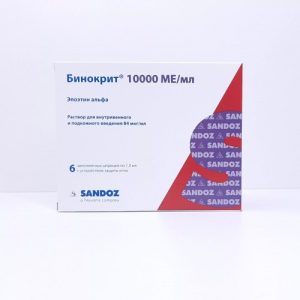 Click Here to Buy Binocrit EPO 10 000IU (6 pre-filled pens) by Sandoz
Click Here to Buy Binocrit EPO 10 000IU (6 pre-filled pens) by Sandoz
Which Animal's Bones Give the Best Broth?
Different animal bones can be used to make broth, each offering unique benefits for bodybuilding recovery. Here are some of the best options:
Beef Bones: Beef bones, especially marrow bones, knuckles, and joints, are rich in collagen and gelatin, which support joint health and muscle recovery. They also provide a deep, rich flavor and are packed with minerals like calcium and magnesium.
Chicken Bones: Chicken bones, particularly those from the feet and wings, are high in collagen and gelatin. Chicken broth is lighter in flavor but still rich in nutrients that aid in muscle repair and joint health.
Fish Bones: Fish bones, especially from oily fish like salmon, are excellent for a lighter broth that is rich in omega-3 fatty acids. These fatty acids have anti-inflammatory properties, which can help reduce muscle soreness and promote recovery.
Pork Bones: Pork bones, including the feet and hocks, are also good sources of collagen and gelatin. They produce a flavorful broth that can support joint and muscle health.
Lamb Bones: Lamb bones are another great option, providing a rich, flavorful broth that is high in collagen and minerals.
Each type of bone broth has its own unique flavor and nutritional profile, so you might want to try different ones to see which you prefer and which best supports your recovery needs.
Related Article: Essential Techniques to Master Squats Form
Overall
Can I use bone broth while on steroids? Yes, bone broth can be beneficial for bodybuilders who are using steroids or other supplements, as it provides essential nutrients that support overall health and recovery. Steroids and other performance-enhancing drugs often place additional stress on the body, particularly on the liver, kidneys, joints, and connective tissues. As mentioned, bone broth is rich in collagen, gelatin, amino acids like glycine and proline, and minerals such as calcium and magnesium, which help support joint health, reduce inflammation, and promote gut health. These benefits are especially important for bodybuilders using steroids, as these drugs can sometimes exacerbate joint pain, weaken connective tissues, or cause digestive issues.
Additionally, bone broth can help with hydration and provide electrolytes, supporting muscle function and recovery. While it shouldn't replace other key nutrients and should be used alongside a well-rounded diet and supplement regimen, bone broth can serve as a natural, nutrient-dense addition that helps mitigate some of the side effects of steroid use and enhances overall recovery and performance.
Bodybuilding
Cellular Alchemy to Restore Testosterone Levels

The convergence of stem cell therapy and hormone regulation represents an intriguing frontier in medical research, especially regarding the possibility of enhancing testosterone levels. In this article, we shall explore cellular Alchemy from a bodybuilding perspective.
Anabolic testosterone, the essential male hormone, plays a crucial role in various bodily functions, including muscle mass maintenance, bone density, and mood regulation. As men age, natural declines in testosterone levels can lead to hypogonadism, significantly affecting their quality of life.
Stem cell therapy or cellular Alchemy offers a promising avenue for restoring testosterone levels, even in bodybuilders. Let’s delve into the details:
Background on Testosterone and Hypogonadism
Testosterone is crucial for male sexual development, cognitive function, and overall health.
As men age, testosterone levels naturally decline, leading to conditions like hypogonadism (abnormally low testosterone).
Hypogonadism can cause mood disturbances, reduced sex drive, and weakened muscle and bone strength.
Traditional Approach: Testosterone Replacement Therapy (TRT)
The common clinical approach is anabolic testosterone replacement therapy (TRT).
However, TRT has significant side effects, including venous thromboembolism and deep vein thrombosis.
Stem Cell Research and Alternative Treatment
Recent stem cell research suggests an alternative treatment: directly transforming adult skin cells into testosterone-producing cells.
Leydig cells in the testicles naturally produce androgens, which are then converted into testosterone.
Scientists have explored creating Leydig-like cells using direct cell reprogramming.
In rodents with hypogonadism, researchers transplanted these reprogrammed cells to boost testosterone production.
Must Read: Muscle Disorders: Diagnosis, Treatment and Coping Routine
Implications for Bodybuilders
Stem cell therapy could benefit bodybuilders by:
Enhancing muscle growth: Stem cells may stimulate muscle repair and regeneration.
Improving recovery: Faster recovery after intense workouts.
Alleviating symptoms: Reduced libido, fatigue, and muscle loss associated with low testosterone.
Stem cell therapy for testosterone restoration is an exciting field, but it’s essential to understand both its potential benefits and risks. Let’s explore:
Testosterone Replacement Therapy (TRT) Risks
TRT is the common clinical approach for hypogonadism (low testosterone).
However, TRT has notable side effects, including:
Increased risk of blood clots: TRT can lead to elevated red blood cell production, potentially causing blood clots.
Sleep apnea risk: Some individuals on TRT may experience interrupted breathing during sleep.
Testicular atrophy: The testicles may shrink due to TRT.
Prostate growth: Regular prostate cancer monitoring becomes necessary.
Stem Cell Therapy Approach
Recent research explores an alternative: directly transforming adult skin cells into anabolic testosterone-producing cells.
Scientists aim to create Leydig-like cells using direct cell reprogramming.
Leydig cells in the testicles naturally produce androgens, which then convert into testosterone.
In rodent studies, researchers transplanted these reprogrammed cells to boost testosterone production2.
Implications and Caution
Stem cell therapy shows promise, but it’s still experimental.
Risks associated with stem cell therapy are not fully understood.
Safety, efficacy, and long-term effects need further investigation.
Cellular Alchemy Success Rate
Stem cell therapy for anabolic testosterone restoration shows promising results, particularly in the context of male hypogonadism. Let’s explore the success rates based on recent research:
Background on Male Hypogonadism
Male hypogonadism is characterized by abnormally low testosterone levels.
It can lead to mood disturbances, reduced sex drive, and decreased muscle and bone strength.
Approximately 30% of older men are affected by this condition.
Common Clinical Approach: Testosterone Replacement Therapy (TRT)
TRT is the standard treatment for hypogonadism.
However, TRT has significant side effects, including venous thromboembolism and deep vein thrombosis.
Stem Cell Research and Leydig-Like Cells
Scientists have explored an alternative using stem cells.
They directly transform adult skin cells into Leydig-like cells, which produce androgens and then biosynthesize testosterone.
In rodent studies, these reprogrammed Leydig cells were transplanted into testosterone-deficient animals.
Remarkably, the cells survived and restored normal testosterone levels in males with hypogonadism.
Success Rate
While individual outcomes may vary, stem cell therapy has shown promise.
Success rates are not universally defined, but the approach offers an exciting alternative to androgen replacement therapy.
Related Article: First Injectable Steroid Cycle
Holistic Approach to Men’s Health
Research Progress: As scientific knowledge advances, we recognize that health interventions should consider the whole person, not just isolated aspects.
Stem Cell Therapy: This emerging field offers potential benefits for various health conditions, including hypogonadism (low testosterone).
Holistic View: Rather than focusing solely on stem cell therapy, we should integrate it into a broader approach that considers lifestyle factors.
Lifestyle Factors and Testosterone
Diet: Proper nutrition is crucial. Certain nutrients (like zinc and vitamin D) support testosterone production.
Exercise: Regular physical activity, especially resistance training, positively influences testosterone levels.
Stress Management: Chronic stress can lower testosterone. Techniques like meditation and relaxation help maintain hormonal balance.
Complementary Role of Stem Cell Therapy
Enhancing Well-Being: Stem cell therapy complements lifestyle efforts.
Managing Hypogonadism: It can address anabolic testosterone deficiency, but it’s not a standalone solution.
Synergy: Combining stem cell therapy with lifestyle changes creates a comprehensive strategy.
Overall Health: This approach benefits not only testosterone levels but also overall health and vitality.
Viewing stem cell therapy holistically involves integrating it with lifestyle choices, creating a synergistic approach to men’s health.
Dietary Recommendations to Support Cellular Alchemy
 Buy Cabaser 1 mg [20 Tabs, Pfizer]
Buy Cabaser 1 mg [20 Tabs, Pfizer]
When it comes to managing hypogonadism, dietary choices play a crucial role. Here are some dietary recommendations:
Nutrient-Rich Foods
Zinc: Include foods like oysters, beef, pumpkin seeds, and legumes. Zinc supports testosterone production.
Vitamin D: Fatty fish (salmon, mackerel), fortified dairy products, and sunlight exposure help maintain healthy levels.
Healthy Fats: Avocado, nuts, and olive oil provide essential fats for hormone synthesis.
Avoid Excessive Alcohol and Sugar
Alcohol can negatively impact testosterone levels.
High sugar intake may lead to insulin resistance, affecting hormonal balance.
Protein Intake
Adequate protein supports muscle growth and overall health.
Include lean meats, eggs, and plant-based protein sources.
Anti-Inflammatory Foods
Chronic inflammation can affect testosterone.
Consume fruits, vegetables, and whole grains to reduce inflammation.
Natural Alternatives to Cellular Alchemy
If you’re looking for natural ways to boost anabolic testosterone without relying on cellular alchemy, consider the following strategies:
Ashwagandha Supplement
Ashwagandha, an adaptogenic herb, has been linked to reduced stress and increased testosterone levels.
In studies, it improved muscle strength and testosterone in men who took 600 mg daily for eight weeks.
Note that it didn’t have the same effect on women.
Prioritize Sleep
Aim for 7-9 hours of quality sleep each night.
Lack of sleep can lower testosterone levels, so prioritize rest.
Optimize Vitamin D
Vitamin D deficiency is associated with low testosterone.
Get sunlight exposure or consider supplements if needed.
Dietary Choices
Certain foods can help raise testosterone:
Grass-fed beef: Rich in nutrients and healthy fats.
Zinc-rich foods: Oysters, beef, and pumpkin seeds.
Vitamin D sources: Fatty fish and fortified dairy products.
Keep in mind that a holistic approach that combines lifestyle changes, nutrition, and natural supplements can contribute to maintaining healthy anabolic testosterone levels. Always consult a healthcare professional for personalized advice.
Overall
As a general recommendation, we advise caution regarding cellular alchemy. While it shows promise for testosterone restoration, it remains experimental. Consult a healthcare professional before considering it. For bodybuilders, natural alternatives (like lifestyle changes and supplements) are safer and more widely applicable.
Also Read: Meet the World’s Strongest Grannies
Bodybuilding
Here Is How To know Your MRV (Maximum Recoverable Volume)

MRV (Maximum Recoverable Volume) refers to the highest training volume an individual can handle while still making progress. It’s a personalized threshold that considers sets, reps, and intensity within a given period (usually a week).
Don't Miss: Best Creatine Pills vs. Powder – Pros and Cons of Both Forms
Exceeding MRV can lead to overtraining, causing fatigue, performance decline, and injury risk. Progressive overload is key, but staying below MRV ensures sustainable gains when usining muscle steroids.
The optimal rep range for Maximum Recoverable Volume (MRV) depends on individual factors, but generally, a moderate rep range of 6 to 12 repetitions per set is effective. This range balances muscle tension, metabolic stress, and mechanical tension, promoting both strength and hypertrophy. Remember to listen to your body and adjust based on your recovery capacity.
Factors That Determine MRV
Here’s a concise breakdown of the factors influencing an individual’s Maximum Recoverable Volume (MRV):
Hormonal Environment
Hormone levels (endogenous or exogenous) impact recovery speed and MRV.
Higher hormone levels correlate with better recovery and a higher MRV.
Nutrition
Adequate macronutrient intake (especially protein) affects recovery and MRV.
Proper nutrition supports muscle repair and capacity for higher training volumes when usining muscle steroids.
Training Experience
Beginners have a lower MRV due to unfamiliarity with high training volumes.
Advanced athletes, with more training years, usually have a higher MRV.
Age
Younger athletes tend to have a higher MRV due to better recovery abilities.
As athletes age, recovery slows down, reducing MRV.
Sleep
Adequate sleep is essential for recovery. Lack of sleep can negatively impact your MRV.
Genetics
Genetic factors also contribute. Some individuals naturally have a higher MRV than others.
Must Read: Horse Chestnut and Other Supplements to Get Rid of Water Retention
Better Ways to Improve Your MRV
Let’s explore ways to enhance a bodybuilder’s Maximum Recoverable Volume (MRV) for optimal muscle growth.
Gradual Volume Progression: Increase training volume gradually over time. Monitor recovery and adjust accordingly.
Personal Volume Landmarks: Understand your individual MRV. Experiment with weekly sets and track recovery.
Balanced Stimulus-Fatigue Ratio: Optimize exercise-specific stimulus while managing fatigue.
Quality Over Quantity: Focus on effective reps and quality sets rather than excessive volume.
Periodization: Vary training volume across mesocycles (e.g., high, moderate, low volume phases) when usining muscle steroids.
Frequency: Spread volume across multiple sessions per week for better recovery.
Compound Movements: Prioritize compound exercises for efficient volume utilization.
Rest Intervals: Adjust rest times to balance fatigue and performance.
Nutrition and Sleep: Support recovery with proper nutrition and adequate sleep.
Deload Weeks: Regularly incorporate lighter training weeks to manage fatigue.
Auto-Regulation: Listen to your body and adjust volume based on daily readiness.
Supplement Timing: Use supplements (e.g., creatine, BCAAs) strategically to aid recovery.
Active Recovery: Include light activities (e.g., walking, swimming) on rest days.
Mind-Muscle Connection: Focus on muscle contraction during each set.
Intra-Workout Nutrition: Consider BCAAs or carb-based drinks during training.
Variety: Rotate exercises to prevent staleness and optimize volume.
Warm-Up Sets: Gradually ramp up intensity to avoid sudden volume spikes.
Individual Recovery Factors: Consider stress levels, age, and lifestyle.
Volume Cycling: Periodically reduce volume to enhance recovery capacity.
Systemic MRV: Prioritize muscle groups based on overall recovery capacity.
Note that individual responses vary, so adjust these strategies based on your unique needs such as when usining muscle steroids.
Deloading Phases to Increase Your Chances of Success
Deloading phases, also known as deload weeks, are strategically planned periods of reduced training intensity and volume. They serve several purposes in a well-structured training program.
Recovery and Adaptation
Deloading allows your body to recover from accumulated fatigue caused by intense training.
During deloads, you reduce the stress on muscles, joints, and the nervous system.
This recovery time helps prevent overtraining and promotes adaptation.
Performance Enhancement
After a deload, you often experience improved performance due to better recovery.
Strength, power, and endurance may increase as your body adapts to the previous workload.
Mental Refreshment
Deloads provide a mental break from heavy training.
They prevent burnout and maintain motivation by preventing staleness.
How to Implement Deloads
Frequency: Deloads typically occur every 4-8 weeks, depending on your training intensity and individual needs.
Volume Reduction: Decrease training volume (sets, reps, or both) by about 40-60% during the deload week.
Intensity: Maintain intensity (weight lifted) but reduce overall workload.
Focus on Form and Technique: Use the deload week to fine-tune your lifting technique.
Cardio and Mobility: Include light cardio and mobility work to promote blood flow and flexibility.
For instance, if you’ve been lifting heavy weights, reduce the weight and perform fewer sets and reps.
For endurance athletes, decrease mileage or intensity during deload weeks.
Deloading is individualized. Listen to your body, assess your recovery needs, and adjust the deload parameters accordingly.
Is It Possible to Measure MRV?
We have seen that MRV is a critical concept for optimizing muscle growth. But can you measure it accurately? Here are some methods to determine your MRV:
Trial and Error Approach: Gradually increase your weekly training volume (sets and reps) over several weeks. Monitor your recovery and performance. When you notice a decline in performance or recovery, you’ve likely reached your MRV.
Incremental Volume Increase: Start with a relatively low work volume (fewer sets per muscle group) at the beginning of a training cycle. Add 1-2 sets per muscle group each week. Observe when performance starts to dip, as that indicates your MRV even when usining muscle steroids.
Overall
In summary, the concept of Maximum Recoverable Volume (MRV) holds immense significance for those aiming to optimize their training routines for muscle growth and overall performance.
By delving into the intricacies of MRV and respecting its boundaries, you can safely push their limits, ensuring consistent progress while minimizing the risk of overtraining. The dynamic nature of MRV, influenced by multifaceted factors such as training experience, age, hormonal balance, nutrition, quality of sleep, and genetic predisposition, underscores the value of personalized training programs.
 Click Here to Buy Rybelsus Semaglutide Tablets
Click Here to Buy Rybelsus Semaglutide Tablets
Regularly assessing and fine-tuning training volume allows bodybuilders to unlock their full potential in their fitness endeavors. While other variables certainly matter, training volume remains a pivotal factor in achieving fitness goals efficiently and effectively.
Related Article: Top 10 Erection Gels & Creams for Him
-

 Steroids2 years ago
Steroids2 years agoShavers and Other Body Grooming Equipment for Bodybuilders In 2023
-

 Steroids2 years ago
Steroids2 years agoChatGPT and Other Avenues to Find Great Bodybuilding Coaches
-

 Steroids2 years ago
Steroids2 years agoBest Oil Recommendations Before Competition for Subtle Shimmer
-

 Steroids2 years ago
Steroids2 years agoPowerlifting Vs Power Building: Find Out the Big Difference and When to Shift Between the Two
-

 Nutrition2 years ago
Nutrition2 years agoEverything Nutritional Food: What’s Too Much Or Too Little
-

 Bodybuilding Products1 year ago
Bodybuilding Products1 year agoTelmisartan In Bodybuilding: An Expert’s Advice
-

 Bodybuilding8 months ago
Bodybuilding8 months agoPrimal Movements: Our Ultimate Guide for Maximum Results
-

 Bodybuilding1 year ago
Bodybuilding1 year agoChia Seeds in A Bodybuilder’s Diet: An Expert’s Advice
-

 Anabolic Steroids10 months ago
Anabolic Steroids10 months agoJoint Stiffness: How to Manage It While on AAS
-

 Steroids1 year ago
Steroids1 year agoAnadrol Cycle: Benefits, Doses, Alternatives, etc.
-

 Anabolic Steroids1 year ago
Anabolic Steroids1 year agoLegality of Anabolic Steroids In Latin America
-

 Beginners2 years ago
Beginners2 years agoTren Cycle for Beginners
-

 Bodybuilding9 months ago
Bodybuilding9 months agoHow Effective is Bone Broth for Recovery?
-

 Steroids10 months ago
Steroids10 months agoOmnitope (Oxytocin)
-

 Bodybuilding1 year ago
Bodybuilding1 year agoHow Much Is Too Much Cardio? Understanding Heart Rate Zones
-

 Steroids9 months ago
Steroids9 months agoSleeping Positions for Effective Muscle Recovery
-

 Bodybuilding1 year ago
Bodybuilding1 year agoList of FDA-Approved Peptides
-

 Bodybuilding2 years ago
Bodybuilding2 years agoCompetition Prep Cycle for Pro Bodybuilders
-

 Bodybuilding1 year ago
Bodybuilding1 year agoCalorie Dumping: A Bodybuilder’s Guide
-

 Bodybuilding8 months ago
Bodybuilding8 months ago2nd Edition of Natural Bodybuilding Competition Facts
-

 Bodybuilding1 year ago
Bodybuilding1 year agoDemystifying Hypertrophy Training
-

 Bodybuilding9 months ago
Bodybuilding9 months agoAre Nootropics a Better Option to AAS?
-

 Anabolic Steroids12 months ago
Anabolic Steroids12 months agoHow Much Do You Know About B-AET? A Fat Burner You’ve Been Missing
-

 Steroids4 months ago
Steroids4 months agoOstarine For Beginners: The Ultimate Guide
-

 Product Reviews12 months ago
Product Reviews12 months agoTop Vitamins for Skin Health

